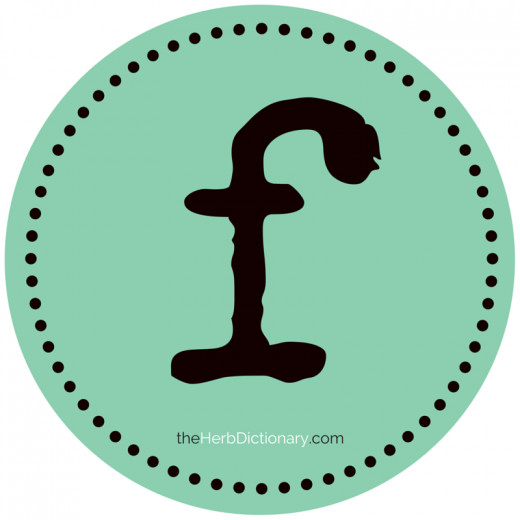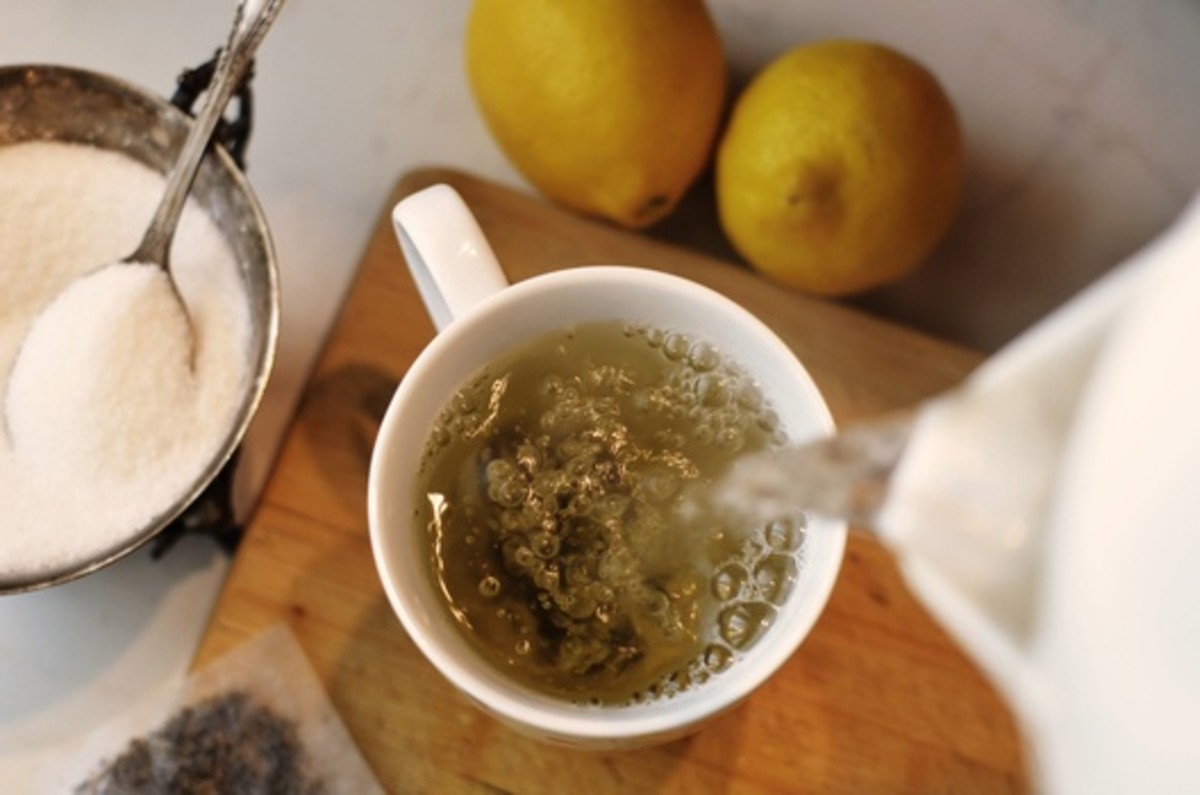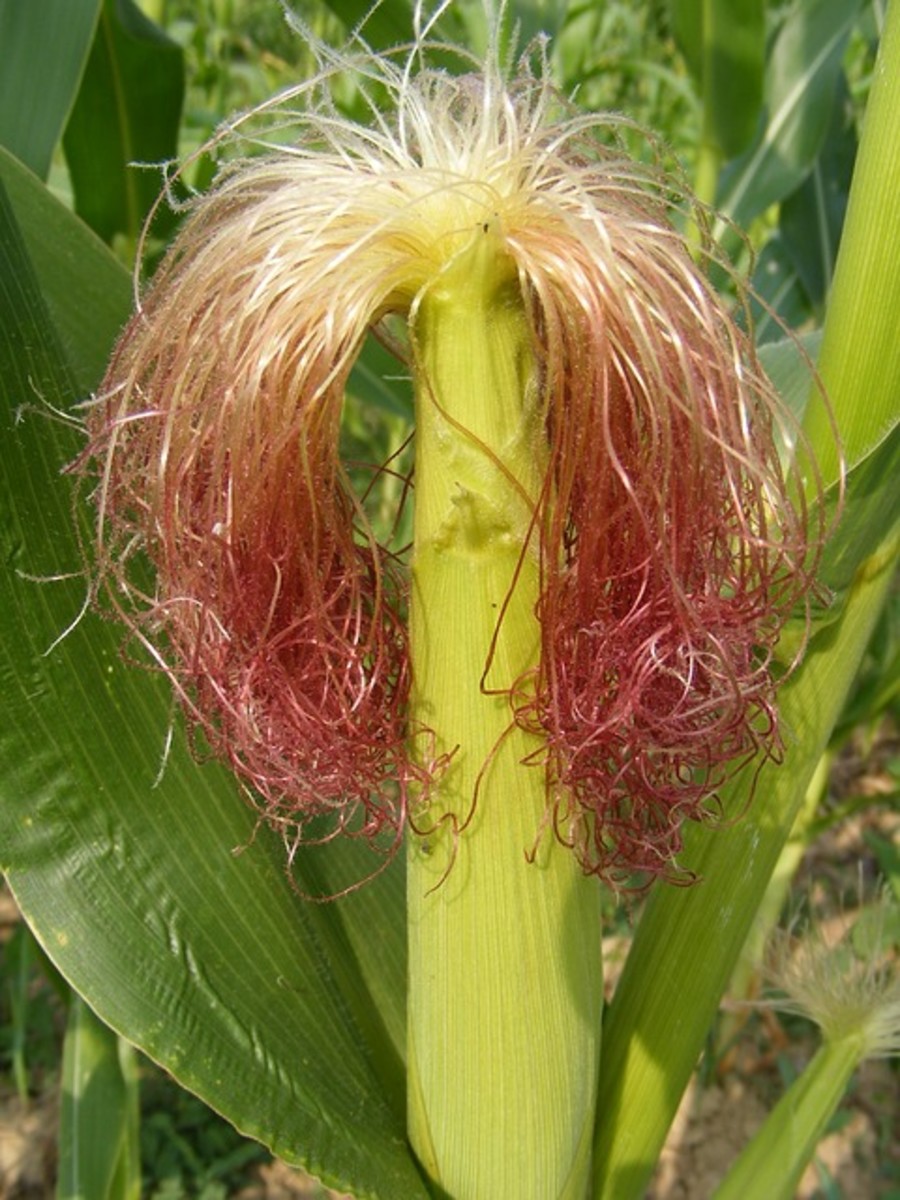Herbal Dictionary: F

FEBRIFUGE
An herb that helps reduces fever by lowering the body temperature from a raised state. A febrifuge acts on the hypothalamus, which is the part of the brain responsible for the regulation of body temperature.
It’s often necessary to continue to taking febrifuges for a few days to keep a fever from coming back. Febrifuge herbs do not affect normal body temperature; they only lower temperatures when a person has a fever.
See Also: Antipyretic
Febrifuge Herbs:
- Bilberry (Vaccinium myrtillus)
- Boneset (Eupatorium perfoliatum)
- Buckthorn (Rhamnus frangula)
- Catnip (Nepeta cataria)
- Chamomile (Matricaria recutita)
- Garlic (Allium sativum)
- Sarsaparilla (Smilax Ornata)
- White willow (Salix alba)
FIBRINOLYTIC
A fibrinolytic herb or compound is one that has anti-platelet properties, which inhibit the formation of blood clots in the blood circulation. The term is derived from the English word: fibrin, and the Greek word lysis, which means “loosening” or “dissolving.”
Fibrinolytic herbs work by breaking down fibrin, which is the main constituent of blood clots. This has the benefit of preventing excessive fibrin from forming blood clots (thrombi). Excessive fibrin is also responsible for scar tissue and painful inflammation. Fibrinolytic herbs are often used to treat cardiovascular disorders such as atherosclerosis, deep vein thrombosis, and varicose veins
Studies show that Gingko, a fibrinolytic herb, owes its antiplatelet properties to two of its active compound: ginkgolides and bilobalides.
Synonym: Antiplatelet, Antithrombotic, Clot Buster, Thrombolytic
Fibrinolytic Herbs
- Cayenne Pepper (Capsicum annuum)
- Garlic (Allium sativum)
- Ginger (Zingiber officinale)
- Ginkgo (Ginkgo biloba)
- Onion (Allium cepa)
FLUID EXTRACT
A concentrated water and alcohol extract of an herb, typically in ratios of 1:1 or 1:2 (of dry weight to menstruum). A fluid extract is made by simmering an herb and reducing amount of water till the solution thickens. The resulting liquid contains a concentrated form of the herb’s active constituents. Glycerin, alcohol or tincture of Benzoin are often added as a preservative.
FOMENTATION
A topical herbal preparation that is used as a warm, moist compress to relieve pain and inflammation. It acts to stimulate blood circulation, draw abscesses, tone muscle, warm stiff joints and rejuvenate tissues. Fomentation is used to treat rheumatism, gout, osteoarthritis, pleurisy and other diseases caused by vitiation of blood.
A quaint term for the application of a hot pack or the material that is thus applied. It is derived from the Latin word “fovimentum,” meaning “a warm application.”
FOOTBATH
A herbal foot bath is an immersion bath that covers the feet and ankles. It is used for cleansing, warming, soothing, or disinfecting the feet.
You can enhance the therapeutic benefits by adding calificient herbs like cayenne pepper, ginger and mustard.
When your feet are immersed in hot water, the heat dilates blood vessels, increasing blood flow in your feet and entire skin surface. This causes blood in upper parts of the body to flow downward into the dilated vessels, relieving congestion in the brain and other internal organs.
A foot bath also elevates body temperature, relaxes tense muscles and increases white blood cell activity.
In this video, Kaye Sehm shows you how to make and use a hot footbath. She explains how it can be used as a home remedy for migraine headaches. It works by dilating blood vessels in the feet and legs, drawing blood from the head and relieving the congestion in the brain that causes the migraine. A footbath can also be used to relieve menstrual cramps.
FREE RADICALS
Each human cell is made up of atoms, which contain electrons and protons. In the healthy human cell, atoms contain an equal number of electrons and protons. The electrons occur in pairs, and form an outer layer surrounding the protons.
When the atom loses one of its electrons, this creates an unstable molecule with an unpaired electron. This unstable molecule is called a free radical. The free radical tries to re-stabilize itself by attacking stable, neighboring molecules and “stealing” an electron to replace the one it lost. The molecule that is attacked and loses an electron, in turn, becomes a free radical itself.
The result is a chain reaction that affects an increasing number of neighboring molecules. This chain reaction is called oxidative stress, which is believed to cause chronic diseases such as cancer, arthritis, diabetes and heart disease.
Free radicals form normally in the body through metabolism. However, certain environmental factors can cause an excess of free radicals, such as pollution, cigarette smoke and radiation. Internal factors such as stress can also create excess free radicals.
Oxidation can be prevented by anti-oxidation, which is achieved by molecules called antioxidants. An antioxidant works by donating an electron of its own to a free radical, thereby neutralizing the free radical and stopping the chain reaction of oxidation.
Video: Free Radicals & Antioxidants Explained
This health video explains how free radicals form, how the damage they cause contributes to cancer, heart disease, inflammation, neural disorders, diabetes and the symptoms of aging. It also shows how antioxidants neutralize free radical, helping to prevent or reverse the harmful health conditions they cause.
FUNCTIONAL FOOD
A food or a food ingredient that has been shown to provide therapeutic health benefits in addition to the nutrients that it contains. Psyllium, for example, which is high in dietary fiber, has been shown to be heart healthy by lower cholesterol levels. Functional foods are given labels by the US Food and Drug Administration (FDA), based on research data.
FUNGICIDE
A compound that kills fungi, or inhibits its growth. Fungi is a group of simple organisms that are related to mold and yeast. For medicinal purposes, antifungal remedies are used to treat infections caused by fungus such as athlete’s foot and ringworm. Herbal fungicides are prepared for household and garden use.
REFERENCES
- Absorption and tissue distribution of curcumin in rats
- Ann McIntyre (1995), The Complete Women's Herbal
- David Hoffman (2013), Holistic Herbal: A Safe and Practical Guide to Making and Using Herbal Remedies
- Experimental Cardiology Journal: Fibrinolytic effects of Ginkgo biloba extract
- Naturalpedia: Fibrinolytic Activity
- Japanese Heart Journal: Onion, garlic, and experimental atherosclerosis
- Journal of Postgraduate Medicine: Effect of ingestion of raw garlic on serum cholesterol level, clotting time and fibrinolytic activity in normal subjects
- Rosemary Gladstar (2014), Herbs for Common Ailments: How to Make and Use Herbal Remedies for Home Health Care






